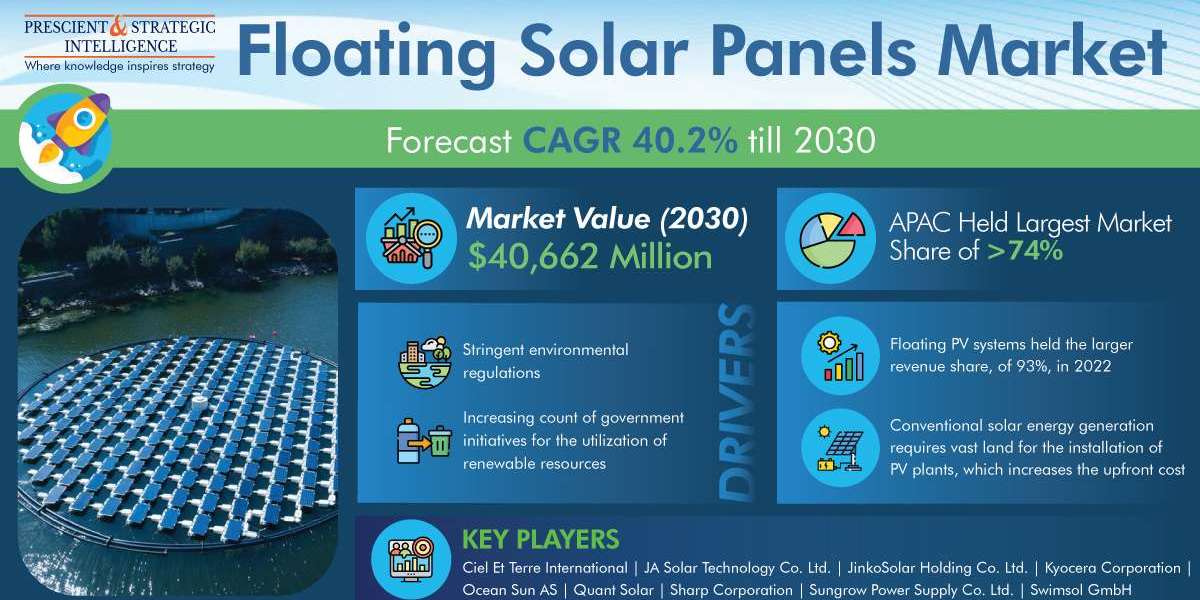The global floating solar panels market is witnessing growth and projected to reach USD 40,662 million by 2030. The industry's advancement can be attributed to stringent environmental regulations, increasing governmental initiatives promoting renewable resource utilization, and the shift away from acquiring large land areas with the adoption of PV units on water surfaces.
In recent times, Floating PV systems have dominated with a substantial 93% revenue share. This is because installing PV plants on waterbodies helps overcome limitations of conventional PV sites, allowing for optimal tidal management, enhanced power generation, and land conservation while enhancing aesthetics. Moreover, they prove to be more cost-effective than traditional mounting-based PV systems, leveraging water's cooling effect to maximize power production.
Moreover, installing a stationary floating PV unit is cheaper in comparison to the solar-tracking floating unit, as the earlier type of panels is made of high-strength plastic with low-priced. Because of the increasing expenditures on solar tracking technology's maintenance, the expenditure on the manufacturing and deployment of stationary alternatives in developing countries is projected to fuel the demand for such panels in the future as well.
Conventional solar energy production needs large terrestrial areas for the installation of PV units, which surges the upfront price. This was one of the key challenges in the development of the worldwide solar panel industry. To solve this challenge, lately, numerous countries have started accepting floating solar panels, which remove the need for land acquisition.
In the recent years, the APAC region had the largest market share. The industry is projected to experience fast growth mainly because of the government initiatives, for encouraging the use of floating solar panels in the APAC region.
Moreover, the strict environmental guidelines, with the increasing low-priced power
demand, are boosting the market growth. The installation of ground-based PV systems needs huge areas; henceforth, land acquisition surges the price of energy. The existing land in many Asian nations is very less, due to population. This is why floating solar panels are most suited in the APAC region.
In the recent years, Europe had the second-largest share. The European continent is estimated to show robust development in the future mainly because of the growing investments by the key companies for the growth of these plants in the continent. The majority of the European countries lack effortlessly obtainable land to build huge solar farms.



